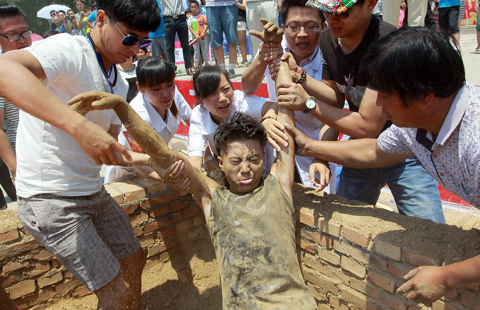
|
 |
|
A courtroom sketch shows Boston Marathon bomber Dzhokhar Tsarnaev (R) speaking as US District Judge George O'Toole looks on during his sentencing hearing in Boston, Massachusetts June 24, 2015. [Photo/Agencies] |
Though Tsarnaev pleaded not guilty, from the beginning of the trial, his defense team focused on trying hard to convince the jurors that he was under the influence of his dominant older brother, a defense tactic that was designed not to win the trial, but to avoid the death penalty.
The US federal jury in Boston - a panel of seven women and five men - convicted Tsarnaev in April of all 30 charges against him, including 17 counts that carried the death penalty.
Last month, the federal jury in Boston unanimously chose death by lethal injection for Tsarnaev over the only other option: life in prison without the possibility of release.
Wednesday's sentence came down exactly 26 months after the deadly bombings, one of the bloodiest attacks in America soil since the Sept. 11, 2001 terrorist attacks. It marks the first time in the post 9/11 era that federal prosecutors have used the death penalty in a case of terrorism.








